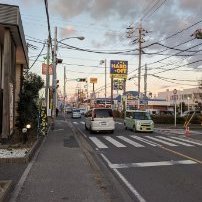All Activity
- Past hour
-

What did you order or the post deliver? (Japanese N Gauge)
AMoonRabbit replied to bc6's topic in General
Got my SL Galaxy stuff today courtesy of RG-Rokko! Snuck an oval of track and controller in with my to work so I can "test" it whilst on my night shift -
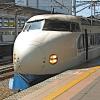
JGR 4-6-4 HC51 1942 Streamlined Bullet Train Locomotive
cteno4 replied to Steve's topic in Other Projects
These dissertations are alway a joy to read @200系! jeff - Today
-
Years back a group contemplated trying to meetup at the big Tokyo hobby show. I think one member actually made it. jeff
-
Perhaps, but will only be joining the rest of us! it just reminded me of the lasercut wood marble maze kits I got for my grand nieces and nephews. jeff
-

What did you order or the post deliver? (Japanese N Gauge)
deathletter replied to bc6's topic in General
My order was less than $800 including the shipping costs. I made sure of that. The only time I went over $800 I was charged customs fees. -
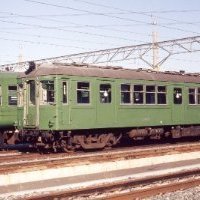
JGR 4-6-4 HC51 1942 Streamlined Bullet Train Locomotive
200系 replied to Steve's topic in Other Projects
They most certainly wouldn't have. Though the alignment of the Tōkyō-Shimonoseki Shinkansen project had been designed to allow for operational speeds in excess of 200 km/h along most of the route, these speeds would've only been achieved on the electrified sections of the route, i.e. between Tōkyō and Atami and between Nagoya and Kōbe, with steam traction being limited to a maximum operating speed of 150km/h, with only the HD53 type design being projected to be able to reach said speed, while the HC51 (general passenger) and HD60 (freight) would be much slower. It would be the largest electric locomotive design, the HEH50 type locomotives, which would be designed with a maximum operating speed of 210 km/h, though whether the Japanese railway industry would've been capable of producing such a design at that point in time is up for debate. In fact, the only reason steam was considered at all was down to the insistence of the army, which considered electric traction, or more specifically electric infrastructure, to be extremely vulnerable to damage by shore bombardments and as such preferred steam [note1], as well as concerns over the ability of the Japanese utility network to supply the required power needed for the project. The Ministry of Railways preferred electric traction, with the lead engineer of the vehicle design bureau, Shima Hideo going one step further, arguing strongly in favor of using electric multiple units, though he was unfortunately overruled by the majority, resulting in a focus on locomotive hauled trains instead [note2]. The decision to only electrify the aforementioned sections was a compromise between the Ministry of Railways and the army, though even with this compromise, the vehicle design bureau would focus most of their attention on the electric locomotive designs while the steam locomotive designs were treated more like a compulsory design project instead, this can be seen in the quality of the design drafts with the design for the HEF10, HEF50 and HEH 50 being relatively detailed, both in terms of the draft itself as well as in the supplied specifications, while the steam locomotive designs were extremely basic in comparison. All of this is rather academic though, as the Tōkyō-Shimonoseki Shinkansen project wasn't expected to be completed until 1959 at the earliest, the design drafts for both the steam and electric locomotives were just that, drafts. They were drafted more as a study into what the motive power for the shinkansen could look like, rather than actual design studies, which were expected to be completed closer to the completion of the project. As a side note, and as a personal pet peeve of mine, the term dangan ressha, or bullet train, didn't originate with the prewar shinkansen project, rather it had existed for more than a decade prior to the Tōkyō-Shimonoseki project being announced to the public. The actual origin of the term can be traced back to the introduction of more militaristic language during the early years of the Shōwa period, with the word dangan, or bullet, being used as an adjective for faster types of transportation. For railways this meant that faster express trains, mostly express freight trains to be more specific, ironically, started to be referred to as dangan ressha both by the press and by extension the general public sometime around 1930 or earlier (the earliest mention I have found dates back to 1930), with the term becoming more prevalent after the Mudken Incident and subsequent Japanese occupation of Manchuria in September 1931 and especially after the Japanese invasion of China in July 1937, and the subsequent mobilization which started in 1938. As such, though the project was internally referred to by either its official project name, i.e. the Kōkitetsudō Keikaku, or Broad Gauge Railway Plan, or the more common Tōkyō-Shimonoseki Shinkansen, often shorted to just shinkansen, in the press it would mostly be referred to as the Tōkyō-Shimonoseki Shinkansen Dangan Ressha, with dangan ressha in this case being a general description of the type of trains, i.e. fast express passenger and freight trains, that would be operating on the line, not necessarily the project nor the rolling stock itself. In fact the term wasn't unique to railways either as for example during the construction of an expressway between Nagoya and Kōbe, which had been proposed during the war, the cars that would be travelling on said expressway were referred to as dangan jidōsha, or bullet cars, by the press at that time. As such, the term has a strong connection to the nationalistic and militaristic culture, including language, being inserted in for example education and the press during the early Shōwa period, especially after the invasion of China. It should therefore come as no surprise that the term fell out of use completely, and immediately, after the end of the war, though the term dangan ressha keikaku, or bullet train plan was often mentioned during the construction of the Tōkaidō Shinkansen as a way to refer to the prewar, Tōkyō-Shimonoseki Shinkansen, which cemented the connection between the term dangan ressha and the prewar shinkansen project, even though, as I mentioned before, it wasn't generally referred to as such at that time, at least to my knowledge. [note1] The army used the same reasoning against the electrification of coastal routes by the Ministry of Railways (or the preceding Railway Institute, and post 1943 the Ministry of Transportation) ever since nationalization. This had also been one of the major why electrification of the Tōkaidō mainline had been limited to the section between Tōkyō and Atami and Kyōto and Kōbe in the period between the two world wars, and ironically had been one of the reasons why the army objected to the construction of a mainline along the Tōkaidō, when choosing a route for a mainline between Tōkyō and Ōsaka during the Meiji era (the army preferred the more centrally located Nakasendō instead). Ironically, the reality proved to be different, as even with the successful incendiary area bombing campaign waged during the final 6 months of the war, and as such the destruction of the majority of urban centers in Japan, i.e. the areas where electric railways were most prevalent, electric railway infrastructure turned out to be relatively easy to repair, with services being restored within a couple of days at worst, and sometimes within hours. Even the Hiroshima Dentetsu, which of course was heavily damaged by the nuclear explosion, was able to restore services, at least partially, within three days after the bombs were dropped, though some efforts continued into the autumn of 1945. Conversely, large numbers of steam hauled services would be suspended during the final stage of the war, as fuel shortages meant there simply wasn't enough coal for them to operate, a situation which continued into the first months of the Allied occupation. [note2] Shima Hideo had been a strong proponent for the use of electric multiple units both for short distance urban and suburban routes as well as for medium to long distance express services since his visit to Europe, and more specifically the Netherlands, in 1937. He would be able to realize this ideal, despite a lot of opposition by the old guard within the Ministry of Transportation, and since 1949 Japanese National Railways, with the introduction of the MoHa 80 type cars in 1949. Though he resigned from the National Railways in the wake of the Sakuragichō accident, though he was brought back by Sogō Shinji, then president of the National Railways, in the role of chief engineer for the construction of the Tōkaidō Shinkansen. In his position he adamantly argued for the use of electrical multiple units as opposed to locomotive hauled trains for the shinkansen project. Despite, once again, receiving strong opposition from with the National Railways, which included being screamed at by Sogō Shinji, aptly nicknamed 'old man thunder', himself, fortunately his perseverance paid off this time, with the calmly reasoning Shima Hideo eventually managing to convince president Sogō that multiple units were the way forward. -
Just want to add my experience with them, which has been overall positive. I got suckered in with their free shipping promo in February and I've made 12 orders from them since. They've been offering free shipping every weekend since, I assume to take advantage of the weak yen. The first 7 orders were shipped with EMS and the last 5 with DHL. 6 out of 7 orders via EMS came in perfect condition. 1 order came with the box slightly crushed and two of the boxes inside was slightly crushed. The remaining 5 orders came via DHL. 2 came in perfect condition and 3 had some issues being crushed. Every order had around 5-8 items. I would estimate 60% were B Train Shorty sets and 30% were Tomix/Kato sets. The remaining 10% were 3 magazines, along with some tracks/buildings/accessories. The biggest difference is in the box they are using to ship. I've noticed there are two styles. The first one is a proper box which is pretty strong/rigid. This box just has their name/logo printed on the sides of the box. Every order that came in this type of box was in perfect condition, through both EMS and DHL. I've had one order with a heavier magazine come in this just fine. The second box is where I've had problems. This box appears to be custom made to fit your order. It looks like they start with a flat piece of cardboard, cut it to size and wrap to fit around your items after it has been shrink wrapped together. This box has their name/logo on blue stripes that go diagonally across the box. All 4 orders that were crushed used this box. The joint that holds all 4 sides of the box together failed because they only put glue in one or two spots and not along the whole corner. Whatever was stacked on top would no longer be supported by the box and instead by the contents inside. I'll try to add some pictures of the boxes later. Overall, the weight of the items inside hasn't played a huge role for me. Everything is shrink wrapped together so they aren't moving around inside the box. Its always the shipping box getting crushed and coming apart that causes damage. In terms of the cost of items, new items are definitely marked up significantly to make up for the cost of shipping. Depending on item sometimes it is a bit cheaper, about the same cost or more expensive than other shops after shipping is added. It really depends and you need to do a bit of research to get the best price. I think lower cost items tend to be a better deal as they don't mark these up so much. For example, something that costs 2000yen will likely be cheaper with their free shipping promo since shipping can cost as much as the item itself. Used items are a big wild card to me. The used items i look at are generally out of production so they are always marked up everywhere else. Any reputable shop that would sell it at MSRP + shipping are out of stock. I've found a lot of the things I'm interested in are generally very reasonable priced with free shipping, if not some of the best I can find outside of Japan. I think its possible to find better prices in auctions, but the time/effort needed along with the shipping/consolidation makes it not worth it to me.
-
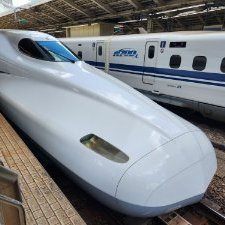
What did you order or the post deliver? (Japanese N Gauge)
Kingmeow replied to bc6's topic in General
$900/person is true for the US but I was curious about the Canadian limits. We came back from 15 days in Japan in September with no Customs issues at EWR. My next trip you can bet I will be planning how to bring back as much train stuff as possible, legally. 🙂 I even have a sinister plan to bring old underwear. At the end of the trip, don't do laundry there but rather throw them out so you have more room for trains! I wonder how my wife will react to that plan of attack??? 🤣 🤣 🤣 -

We should have a meet up!
Tony Galiani replied to Grant_T's topic in Travel: Tips, Planning & Memories
Milepost 0. Tokyo Station. Can't miss it. That's where I met Alastair last year when we happened to be in Japan at the same time. Cheers, Tony -
Having seen them on ebay, they look more like an unauthorised extra production run than a fake or clone. The unusual thing is that they've kept the Dapol packaging, most of the time the cloned products would have a generic name attached (witness the cloned LGB items sold as "Train"). Prices weren't that impressive compared to UK box shifters, Rails are currently offering similar deals but with a warranty and no import VAT ransom. The seller also had Irish OO items purporting to be from the Murphy Models range.
-

What did you order or the post deliver? (HO and other scales)
Welshbloke replied to bikkuri bahn's topic in Japanese: Other Gauges & Scales
Yep, the different roof design does accentuate it but the coupler is definitely mounted further out compared to the gangway. Weird! I suspect Rails probably bought someone's collection which has been slowly clearing over the past few years, they're big enough that they can pretty much turn up with a van and buy the lot if it's an estate sale or similar (and while they'll pay a pittance compared to the actual value, the idea of it being sorted that quickly and easily can be very appealing to next of kin). It's sadly not uncommon to find old models which have never been used here, people collect but never get a chance to build the layout. Wondering if they'll try another 40% off sale as they seem to be trying to clear the decks a bit (some very good deals on O scale locos and stock in recent weeks). -

JGR 4-6-4 HC51 1942 Streamlined Bullet Train Locomotive
SL58654号 replied to Steve's topic in Other Projects
Very fascinating project! I wish you well in this endeavor! 😃 The precursor to the Shinkansen project envisaging steam locomotives for high-speed service (closely following contemporary practice in the USA, Germany and Britain) greatly intrigues me. Ah what might have been! Would Japan have ended up making the fastest steam locomotives of all time? And to think there might've been a nationwide network of high-speed standard gauge lines in Japan fascilitating steam operation. Imagine, what if Flying Scotsman (which visited both America 🇺🇸 and Australia 🇦🇺) would have the chance to do the same in Japan? Other foreign steam engines like 'Boxhill' have been known to visit. -
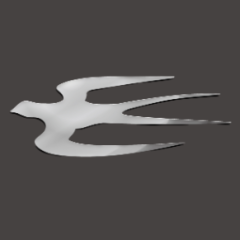
JGR 4-6-4 HC51 1942 Streamlined Bullet Train Locomotive
SwallowAngel replied to Steve's topic in Other Projects
Ooooohh, Streamliners, my favourites! The SL Bullet Train concepts sure are an oddity in the history of JNR, definetly a loco worth modelling! I do faintly remeber seeing this model in N of HD53, though the basis was a SP Daylight loco, causing a bit of a jarring size difference. I certainly will be following this project with great interest! -
Kato 2024 booth Tomytec Tomytec
- 1 reply
-
- 3
-

-
The Shizuoka Hobby show is here again. For those not familiar this a major Japanese hobby industry trade show with two industry days and two days open to the public. This how comes shortly after Golden Week and early into the new fiscal year starting on April 1. Hobbyist displays will come later in the year at other shows like JAM. Let's start this year with the official Green Max video. Public viewing doesn't come until Friday and Saturday.
- 1 reply
-
- 3
-

-
And, at least as importantly, where? Out of a whole country there a a lot of possible places to go.....
-
I'll most likely be in Japan in December/January. When did you have in mind?
-
Lovely photos.
-
Hello there, I started to design my first N-Gauge Loco Model. The prototype is the JGR Class 4-6-4 HC51 Bullet Train pre-war concept of 1942 which was never realized because of the Second World War. This will be a freelance Model, based on the drawings for the 4-6-4 HC51 and an existing Freelance Model of another conceptional Streamlined Locomotive, the 4-8-4 HD53. The final Model will be compatible with existing 1:150 Japanese Model Trains. The Chassis comes from a damaged and stripped down KATO C62, which I had stored for few Years. I will use this as the working Part of a freelanced Variant of that Streamlined Locomotive. The Loco Body will be 3D printed with my 4 Years experience of 3D Design and Printing. Works on the Body have already started. Let's see ho long I need for that Design. I also plan to make the final Printing Files public. I also have Ideas for a "stripped down" Post War Variant with cut down shell.
-
Are you saying I've lost my marbles ?? 😁
-
Marble maze?! jeff
-
wise man. I’ve traveled all over the world and used the same approach and never an issue and I’ve been in some odd situations traveling. Also if some official in a podunk airport grabs your rechargeable batteries and charger saying they are not allowed on the airplane you say “ok” and not “why are you taking the charger then?!” Be nice, be ready, and be read to bend some… jeff
-
And what do you do if you miss the train to get to a different level.. .. you use the stairs, of course 🙂 (or maybe a lift, when one gets built) I intentionally left a hole in each level at the right hand end, just for this purpose. 🙂
-
.thumb.jpeg.2c2bf3121665eb697e907cf80a35471b.jpeg)
New NHK World show: Japan Railway Journal
Dillon replied to miyakoji's topic in Japan Rail: Pictures & Videos
Miki wasn't bad, it takes time for a new host to find his or her footing. -
.thumb.jpeg.2c2bf3121665eb697e907cf80a35471b.jpeg)
New NHK World show: Japan Railway Journal
Dillon replied to miyakoji's topic in Japan Rail: Pictures & Videos
Really? I didn't see any segments in the past when Russell was the host. Was it after he left?







